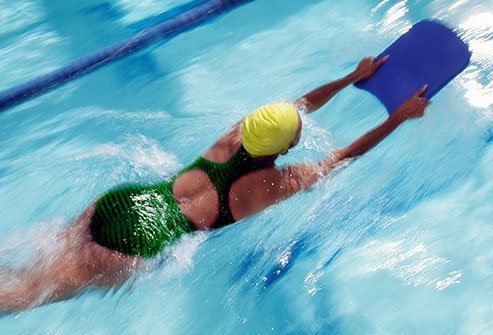Although diet is often the most emphasized lifestyle change for managing blood sugar, exercise is an extremely important contributor of wellbeing for people with diabetes. Blood sugar is affected by exercise in the short-term, as the body burns blood sugar for fuel, as well as in the long term, since exercise supports the function of insulin (the hormone responsible for lowering blood sugar).
Exercise recommendations for most adults are 150 minutes of moderate-intensity or 75 minutes of vigorous-intensity structured movement per week. Not only can regular exercise help manage blood sugar, but it can contribute to stronger bones, prevent falls, reduce back pain, increase energy levels, reduce stress, improve sleep, and more!
Safety is an important consideration if you are new to exercise. Get clearance from your physician before beginning a new exercise routine, especially if you are taking medication or have poorly controlled blood sugar. Be sure to pay attention to any new sores or spots on your feet and communicate changes to your healthcare team. Additionally – it is advisable that you carry a small 15g carbohydrate easy-to-digest food, beverage, or glucose tablets in case of low blood sugar while exercising.
Check out these options to get an idea of what type of movement can best fit into your exercise routine to reduce your blood sugar:
1. Walking
Taking a daily 20–30-minute walk is an effective way to help reduce blood sugar levels. Walking with a friend or family member can add quality social time to your day and can fit in the middle of a busy workday.
2. Swimming
Many people find swimming to be much easier on achy joints than other types of movement. Aquatic Aerobic classes are popular at many gyms and can be a great weight to work out your heart and muscles without causing your joints excessive pain or damage. Like other cardiovascular exercise swimming can be beneficial for lowering blood sugar.
3. HIIT (High-Intensity Interval Training)
HIIT consists of short, intense bursts of exercise follow by rest. Routines can be as short as 10 minutes. Effects of HIIT have been studied specifically in people with type 2 diabetes, showing an improvement in average blood sugar after only two weeks.
4. Weightlifting
Resistance training like weightlifting increases your muscles’ ability to store glucose which helps lower blood sugar. The American College of Sports Medicine recommends resistance training two to three times per week. Be sure to focus on the different major muscle groups including back, chest, arms, abdominals, legs and shoulders. If you are new to weight training, reach out to a personal trainer or try a group class to learn how to lift safely and effectively.
5. Yoga
Another form of resistance training usually using bodyweight only, yoga has been shown to not only play a role in blood sugar management, but to help lower heart disease risk and blood pressure. Starting yoga can be intimidating but seek out a beginner’s class and do what feels best. It can be an easy exercise to start if you have pre-existing injuries or are very new to exercise. Yoga is a great stress-relieving tool and improves circulation, which is critical to prevent neuropathy, a common side-effect of diabetes.
6. Body Weight Workouts
Workouts using your own bodyweight, also known as calisthenics, are also considered to be resistance training. Examples of calisthenics include squats, pushups, pull-ups, lunges, and sit-ups. These can be an easy way to begin exercising without having to buy equipment or pay for a class. As you get stronger, try increasing repetitions, number of sets, or try adding resistance bands to your movements to intensify your workout.
7. Pilates
Pilates is similar to yoga but incorporates more movement and coordination. As other types of resistance training, Pilates has been associated with better blood sugar control in studies. Try joining a class or studio for guidance on how to safely begin this type of movement.
8. Cycling
Indoor or outdoor cycling is an excellent non-weight bearing cardiovascular workout and has been studied in diabetes prevent and treatment. Cycling for only 30 minutes a day has improved blood sugar levels in adults for the following 24 hours. With the rising popularity of interactive indoor cycling programs, there are more ways than ever to incorporate cycling into your exercise routine.
9. Running
Running, along with other workouts, can be very effective in blood sugar management by improving insulin function. Running with a buddy and carrying emergency sugar supplies can make this a safer option for people with type 2 diabetes. Depending on the length or intensity of your run, you may want to work with you doctor or dietitian to create a medication and nutrition plan that can best support your goals
SUPER SAVER: ORGANIC CEYLON CINNAMON COMPLEX AS LOW AS $11.66 PER BOTTLE + FREE SHIPPING!

